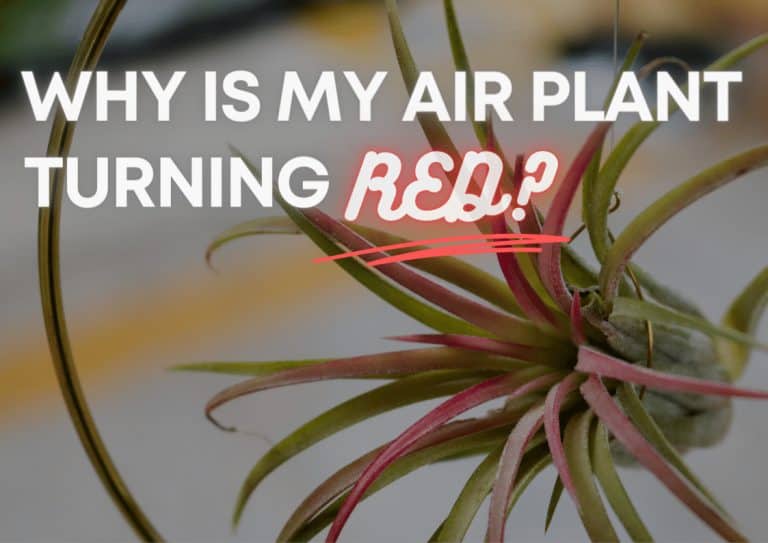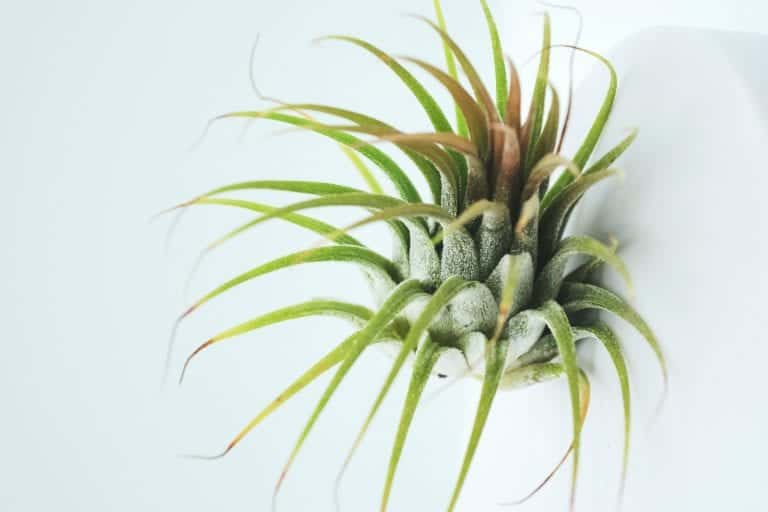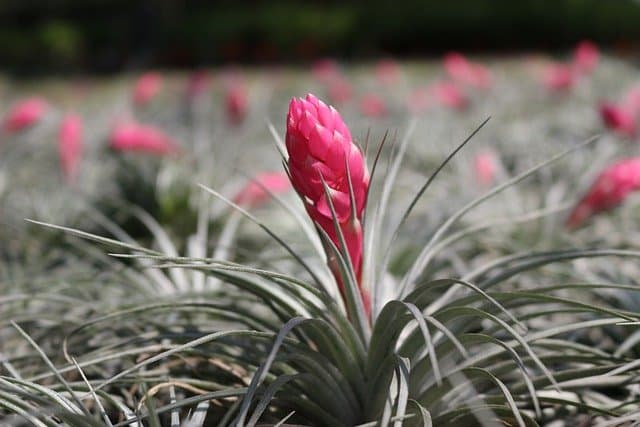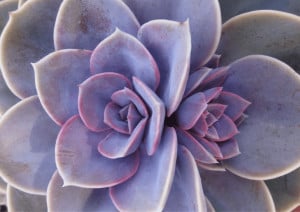Why Is My Air Plant Turning Red? {EXPLAINED}
-
Chris Dosser
- December 3, 2022
If you buy something using the retail links in our articles, sometimes we earn a small affiliate commission. This does not impact the products we recommend.
For those of us who live in a temperate climate the changing of the seasons has conditioned us to associate color change in plants with the end of a life cycle.
When tree leaves begin changing color in Fall for example, we know they are dying and will eventually fall off.
So its completely understandably to wonder if the same applies to air plants whose leaves have begun to turn a red hue.
Air plant leaves turning a shade of red is not a sign that anything is amiss or wrong with the plant. It is completely normal and could be triggered by either (I) your air plant being sufficiently hydrated and exposed to sunlight, or (II) your air plant going through its natural life cycle and is maturing to a point when it is about to begin flowering.
Not all air plants exhibit a natural color change when healthy, although all will begin to change appearance if rotten or underwatered. Being able to identify the species of your air plant can therefore erase doubt and allow you to know what color changes to expect.

Exposure to sunlight can turn some Tillandsia species red
Specific varieties of air plants like the Tillandsia brachycaulos and Tillandsia bradeana are known to turn a shade of red when exposed to bright light.
This trait is attractive for plant collectors who seek them out solely to include this beautiful tone in amongst their collection.
You’ll know if your air plant is receiving too much direct light (essentially drying it out) if the tips of the leaves begins to turn brown instead of red.
If you plan on keeping your air plant indoors where it will get a lot of light in a space that isn’t humid, make sure you mist it at least twice a week.
Providing indirect light for indoor plants is always a safer play if you’re not quite sure what conditions your plant needs to thrive.
If you’re wondering if you can use artificial light to help your air plant turn red, the answer is yes, but you’ll need to follow a few rules to make sure your plant is able to continue photosynthesizing and growing as it would under natural sunlight.
- Use full spectrum lighting: Regular lightbulbs don’t provide the wavelengths that help your plants fully photosynthesize and grow.
- Place your plant no further than three feet from the artificial light: Placing your air plant too far away from a weak light source, even a fully spectrum one, will prevent it from being able to absorb enough light to remain healthy.
- In surroundings entirely devoid of natural light consider providing supplementary light for a minimum of 12 hours per day: You’re essentially mimicking natural sunlight here, most grow lights have an automated timer in-built.

Air plants turn red as they prepare to bloom
Air plants flower only once in their lifetime and can take up to several years before they are in such a condition to do so.
Some air plants turn the most vibrant shade of red right before they’re about to bloom. Which is beautiful but slightly sad as after the air plant flowers completely, it will die soon after.
Depending on your species, the air plant can produce up to eight offsets. Leave them attached to the parent plant as long as possible necessary nutrients.

It’s understandable that after seeing your air plant drastically change color from green/blue to red it might prompt alarm bells.
Worry not however as seeing red in your air plant is a sign you’re taking excellent care of it, and it’s ready to sprout new life. Just keep doing what you are doing.

Chris Dosser
Co-Founder of Eden Indoors
Chris is a self-taught horticulturist with over a decade of experience caring for houseplants and creating lush, thriving indoor oases. He specializes in Monstera, and by self admission has a serious problem with buying and propagating rare indoor plants!
Similar Posts
Why Are My Monstera Aerial Roots Shriveling?
Should you be worried if the aerial roots on your Monstera starts shriveling up? Does this happen naturally or is it a sign of a poorly plant?
The Secret To Cleaning Succulents With Farina
Removing fragile farina from a plant leaves it open to damage, so how can you properly and safely clean your succulent?



